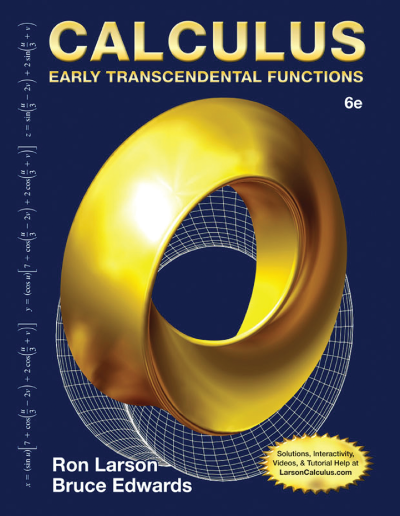Srinivasa Ramanujan
(1887 – 1920)
Srinivasa Aaiyangar Ramanujan is one of history’s most intriguing mathematicians. Born to an impoverished family of the Brahman caste on December 22, 1887, in southern India, Ramanujan had virtually no formal training in mathematics. In fact, his only textbooks, Synopsis of Elementary Results in Pure and Applied Mathematics and a volume on plane geometry, were borrowed from others. Nevertheless, he is credited with many remarkable discoveries.
Ramanujan’s mathematical genius was discovered almost immediately. Before the age of seven he was awarded a scholarship by the Town High School at Kumbakonam. There, he astonished his friends and teachers by mentally calculating, to many decimal places, the values of π and the square root of two.
Unfortunately, his obsession with mathematics precluded the completion of his formal education. Ramanujan lost several scholarships when he failed examinations in all subjects other than mathematics; he simply had no desire to study anything else. Ultimately, he was forced to accept a clerical position at a meager salary.
Despite his poverty, Ramanujan continued to immerse himself in mathematics. He scribbled his formulas, expressed in irregular notation, in a series of shabby notebooks. Since there were at that time no mathematicians in India capable of molding his extraordinary talent, his friends persuaded him, in January 1913, to send a representative sampling of his equations to three of England’s most prominent mathematicians.
Two of the men returned his letters without comment; the third, G. H. Hardy of Trinity College, Cambridge, recognized Ramanujan’s genius. Hardy, himself a man of extraordinary ability, reviewed Ramanujan’s peculiar theorems and concluded, “A single look at them is enough to show that they could only be written down by a mathematician of the highest class. They must be true because, if they were not true, no one would have had the imagination to invent them.” Hardy immediately wrote to offer Ramanujan a scholarship at Trinity.
Ramanujan’s journey to England was delayed by a religious prohibition against foreign travel. Once at Cambridge, he encountered yet another challenge. As Hardy later wrote,
“There was one great puzzle. What was to be done in the way of teaching him modern mathematics? The limitations of his knowledge were as startling as its profundity. Here was a man who could work out modular equations, and theorems of complex multiplication, to orders unheard of, whose mastery of continued fractions was, on the formal side at any rate, beyond that of any mathematician in the world, who had found for himself the functional equation of the Zeta-function and the dominant terms of many of the most famous problems in the analytic theory of numbers; and he had never heard of a doubly periodic function or of Cauchy’s theorem, and had indeed but the vaguest idea of what a function of a complex variable was. His ideas as to what constituted a mathematical proof were of the most shadowy description. All his results, new or old, right or wrong, had been arrived at by a process of mingled argument, intuition, and induction, of which he was entirely unable to give any coherent account.”
As they shared their unique mathematical perspectives, Ramanujan and Hardy arrived at some startling discoveries, particularly in number theory. Among the most significant was their method of partitioning, or determining the number of ways to express an integer as the sum of other integers. At the time, the process of partitioning seemed to be of little practical value, but now has important applications in modern physics. Ramanujan also developed formulas that enable modern computers to calculate virtually limitless values of π with incredible speed and accuracy.
Ramanujan’s passion for mathematics ultimately proved fatal. His health was destroyed by his habit of studying for as much as thirty-six hours at a time. He was often so absorbed in his calculations that he forgot to eat even the few foods permitted by his strict vegetarian diet. After five years in England, Ramanujan fell gravely ill. He was believed to be tubercular, but is now thought to have suffered a severe vitamin deficiency.
In April 1919 Ramanujan returned to India to recuperate; however, he ignored the advice of his doctors and continued to devote himself to mathematics. He died in Madras on April 26, 1920, at the age of thirty-two.
Links
http://www-history.mcs.st-andrews.ac.uk/Biographies/Ramanujan.html
http://www.usna.edu/Users/math/meh/ramanujan.html
http://www.imsc.res.in/~rao/ramanujan.html
References
- Borwein, Jonathan M. and Peter B. Borwein. “Ramanujan and Pi.” Scientific American 258 (February 1988): 112-117.
- Dunham, William. Journey Through Genius: The Great Theorems of Mathematics. New York: John Wiley & Sons, Inc., 1990.
- Gillispie, Charles Coulston, ed. Dictionary of Scientific Biography. Vol. XI. New York: Charles Scribner’s Sons, 1975.
- Kanigel, Robert. The Man Who Knew Infinity: A Life of the Genius Ramanujan. New York: Charles Scribner’s Sons, 1991.
- Newman, James R. “Srinivasa Ramanujan.” In Mathematics in the Modern World, edited by Morris Kline, 73–76. San Francisco: W. H. Freeman and Company, 1968.











